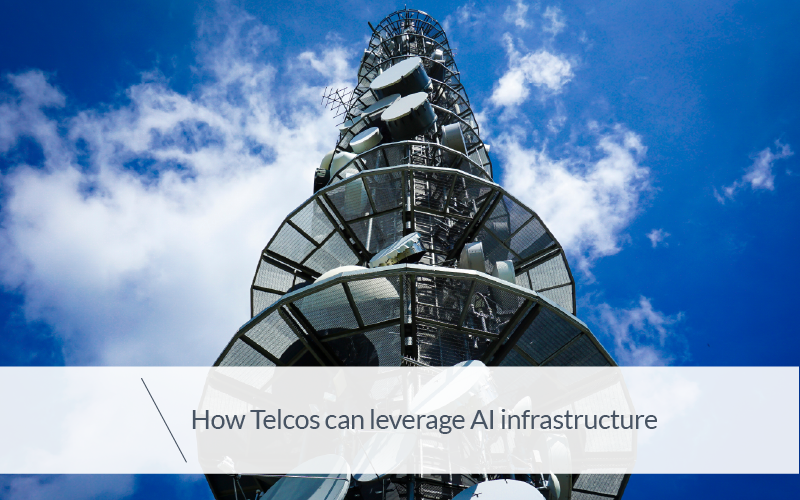
For years, telecom operators have represented the essential infrastructure of global connectivity. Today, with the rise of generative and agent-based artificial intelligence, their role is rapidly evolving: from simple network providers to key players in the digital ecosystem on which the new AI economy is being built.
This transformation, however, is far from simple. Market dynamics are changing rapidly, demand is still being defined, and competition is increasingly intense. In this scenario, telcos are facing a decisive moment, where strategic vision and execution capability will be crucial to enable a new phase of growth.
A Pivotal Moment for Operators
Over the past decade, hyperscalers - the big cloud service providers - and other digital players have benefited from the explosion of digital data generated and stored online, reaping significant profits. In contrast, telcos' revenues have remained more or less stable, although their role has been and continues to be of essential support for the whole fundamental infrastructure of digitisation.
Today, however, the surge in demand for high-performance computing, advanced connectivity and local infrastructure - fuelled by AI - is opening up new opportunities, and telecom operators, due in part to their ubiquitous presence and experience in managing complex networks, are ideally positioned to seize them.
According to the McKinsey report AI Infrastructure: A New Growth Avenue for Telco Operators, global demand for data centres could triple by 2030. This will drive a significant increase in the need for fiber optics, energy, and GPUs (graphics processing units) – specialized processors designed for parallel calculations that are essential for training and running artificial intelligence models.
For telcos, this represents a concrete opportunity for diversification and growth, developing along four main strategic lines.
1. Connecting new data centres with fibre
Over the next few years, more than 2,600 new data centres are expected to be built, many of them in underserved areas. As a result, fibre connections will be crucial to meet the increasing demand for AI computing.
Telcos, leveraging their existing networks and local licenses, particularly in Europe and Asia Pacific, are well-positioned to provide fiber capacity in markets where they already operate. Alternatively, they can explore targeted investments or infrastructure leasing opportunities to hyperscalers.
Examples of alliances such as those between Verizon, Google Cloud and Meta demonstrate how strategic partnerships can enhance existing networks and generate new sources of revenue.
2. Offer intelligent network services for AI cloud access
As AI expands into the cloud, the need for advanced, flexible and secure networks grows. Telecommunications companies can respond with next-generation Software-Defined Networking (SDN) solutions that dynamically manage data flows, improve performance and optimise costs.
A crucial aspect concerns egress costs, i.e. the fees charged by cloud providers for transferring data out of their infrastructures. These costs can become significant, especially for companies that need to move large volumes of data from cloud environments outwards (e.g. to other data centres, corporate locations or edge devices).
Telcos, with their distributed and local network infrastructure, can help to reduce or manage these costs more efficiently by offering cheaper alternatives for accessing AI cloud services.
This approach can unlock new business models focused on performance and functionality, rather than merely transport capacity. Initiatives such as Lumen's ExaSwitch or BT's (British Telecommunications, one of the world's leading UK-based telecommunications companies) integrated networking and security solutions highlight the transformative potential of these offerings in the B2B market.
To remain competitive in this space, it will be essential to invest in research and development, software programming, and well-defined technology roadmaps.
3. Converting unused space and energy into data centres for AI
Many operators have underutilised central office or data centre spaces. Instead of decommissioning them, they can turn them into strategic assets for the new AI economy.
In an environment where new data centres take years to build and power grids are under pressure, reusing existing infrastructure can offer a competitive advantage. Modes of operation include leases, colocation or revenue-sharing agreements with hyperscalers and GPUaaS (GPU as a Service) providers.
Verizon, for example, works with AWS (Amazon Web Services) - the leading global provider of cloud services - to offer edge capacity, i.e. computing power and storage distributed close to end-users or devices, reducing latency and improving the performance of AI applications and other digital services by leveraging its existing infrastructure.
4. Offering GPU-as-a-Service (GPUaaS)
The GPU-accelerated AI market is expanding rapidly. Telcos can offer remote access to GPU clusters, hosted in owned or leased data centres, to address needs such as training and inference of AI models, or the management of workloads related to “sovereign” forms of artificial intelligence, i.e. developed and managed in accordance with local regulations, on controlled infrastructures and with data maintained within national or European borders.
By 2030, the GPUaaS (GPU as a Service) market - i.e. the delivery of GPU computing power via cloud services on demand, without the need to physically purchase or manage hardware - could reach a value of USD 70 billion, representing a significant opportunity for operators.
Some players, such as Singtel and Softbank, have already launched bids in this area, while Telefonica is vertically integrating AI capabilities to further stimulate demand.
Although the required investments are significant, the expected returns (between 6% and 14%) appear attractive. Modular approaches, centred on key customers and strategic partnerships, could therefore help mitigate the risks.
Timely Action is Essential
In a rapidly changing environment, inertia is the greatest risk. Telecommunications companies must act decisively, carefully assessing their resources, market position and risk tolerance to select strategies that align with their goals.
Not all operators will take the same approach, but overlooking these opportunities entirely would allow hyperscalers and other more nimble digital players to gain further ground.
By combining clear vision, agility, and strong execution, telcos can not only maintain their relevance but also thrive in the new era of artificial intelligence.



